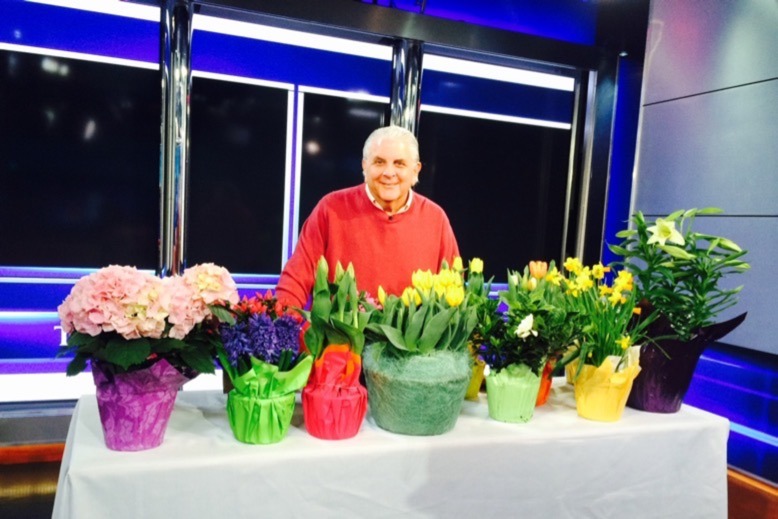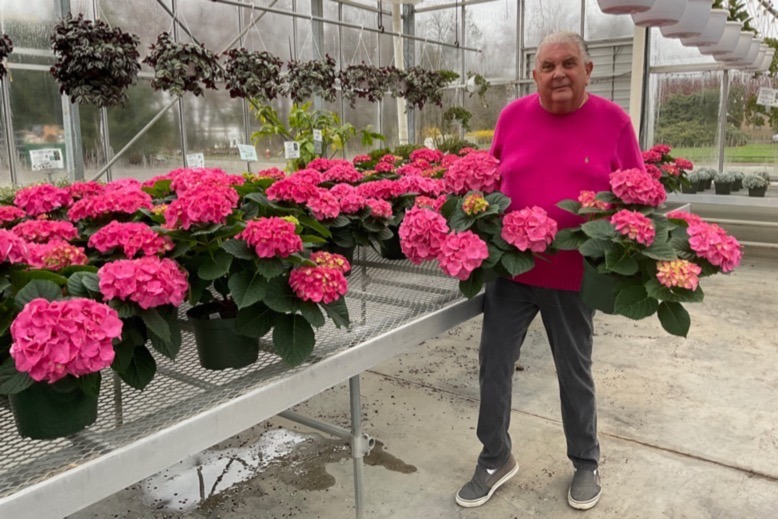[ad_1]
Though I’ve long been known for my experience with fruits and vegetables, I thought I’d digress this month to talk about some other farm products I’ve come to know: Easter and Passover plants.
Growing up in a seasonal family business—Napolitano’s Produce in Bergenfield—we had to sell whatever we could to survive “shoulder” season, the cold months from November to December and March to April, when there was no local produce to sell. In addition to picking up odd jobs like shoveling snow and delivering newspapers and telephone books, my family sold Christmas trees and Easter plants to help boost the household income. So I got to learn about many of the popular plants, flowers and trees that people use to celebrate different holidays.
Easter and Passover are interesting because, occurring anywhere from early March to late April, they can dictate big differences in which flowers and plants are available from year to year. A nice thing about these holidays arriving in early-to-mid-April this year is that frost concerns should be behind us, and many early spring flowers should be in bloom. Like most everyone, I can’t wait to enjoy their bright colors and lovely scents. (And I’m also excited that the annual planting of my tomatoes, eggplants and peppers will soon be underway!)

Produce Pete discusses the range of different Easter and Passover flowers during a segment of NBC’s Weekend Today in New York. Photo courtesy of Pete Napolitano/NBC
PERENNIALS
Early in the season, bulb plants such as tulips, hyacinths, lilies and daffodils are the most prominent. After they’ve bloomed and start to lose their flowers, these plants can be cut back to about an inch or two from the bulb top and planted in the ground. They’ll come up again next year—and for years after that. Perennials are a strong and rugged variety that weather cold temperatures very well.
Tulips are one of my favorite plants—I love how the flower opens up in sunlight and closes when it gets dark.
Hyacinths have a wonderful smell, almost like perfume, and can permeate a room. Like many flowers, the aroma can trigger a wave of memories. Whenever I remember my Grandma Morrissey, for instance, I always think of hyacinths; they were her favorite.
Lilies are among the most popular Easter flowers. Very beautiful to look at, they’ll return every year if you cut them back and replant them. A quick way to keep lilies looking clean and pretty is to pull out the pollen stems from the inside of the flower. (Just be careful not to get the pollen on the white flower—that will stain the flower and make it die sooner.)
Daffodils are also visually lovely and are especially pretty planted in your yard. When daffodils start to peek out of the ground, you know spring and warmer weather are close!

Produce Pete displays a variety of Easter and Passover flowers at DePiero’s Farm Stand & Greenhouses in Montvale. Photo courtesy of Pete Napolitano
MORE GREAT PLANTS FOR EASTER & PASSOVER
Mums, hydrangeas, cineraria, miniature roses and azaleas are also great plants for the Easter and Passover holidays.
Mums come in many colors and remain in bloom a long time—sometimes two to three weeks. If you cut them back and plant them, mums will grow back in the fall.
Azaleas are also very pretty, but since they don’t usually bloom this early, the products typically available now at garden centers, farmers’ markets or supermarkets are ones that have been forced to bloom. If you’re planting this kind of azalea outside, be careful with them—they’re not as strong in the beginning. However, if you plant them in a spot with southern exposure and a lot of light, they should be just fine in time.
Hydrangeas, also called snowballs, are another fine option. Once planted in the ground, hydrangeas usually won’t flower for two to three years, but then they’ll do so regularly. They might also change color—from pink to blue or purple, for instance.
Years ago, my father had a whole truckload of hydrangeas to sell for Easter. When they suddenly began to wilt, my mom—the smart one in our family!—recommended we feed them some aspirin. So we bought a case of it and diluted the tablets in a big vat of water. With a pencil, we poked three or four holes in the soil around each plant, then submerged them in the aspirin-infused water up to their soil levels. We watched as bubbles appeared in the holes, and when the bubbles stopped, we knew each plant was sufficiently saturated. Sure enough, it worked: The hydrangeas perked right up! As our family learned time and time again, mom was always right! To help your own potted hydrangeas stay healthy, simply dilute two aspirin in water and give them a drink.
Nothing warms us up after winter quite like the colors, fragrances and new growth of spring! Enjoy it all, and have a happy and healthy Easter or Passover.
About “Produce Pete” Napolitano
With over 65 years of experience in the produce industry, New Jersey’s own “Produce Pete” Napolitano is a renowned fruit and vegetable expert, author and TV personality who’s appeared on a highly popular segment on NBC’s Weekend Today in New York Saturday mornings for over 28 years. His new book, They Call Me Produce Pete: Food, Memories and Cherished Family Recipes From America’s Favorite Expert on Fruit and Vegetables, is now available. For more information, visit producepete.com.
About Susan Bloom
A regular contributor to New Jersey Monthly and a variety of other well-known local and national publications, Susan Bloom is an award-winning New Jersey-based freelance writer who covers topics ranging from health and lifestyle to business, food and more. She’s collaborated with Produce Pete on a broad range of articles for over a decade.
No one knows New Jersey like we do. Sign up for one of our free newsletters here. Want a print magazine mailed to you? Purchase an issue from our online store.
[ad_2]
Source_link


